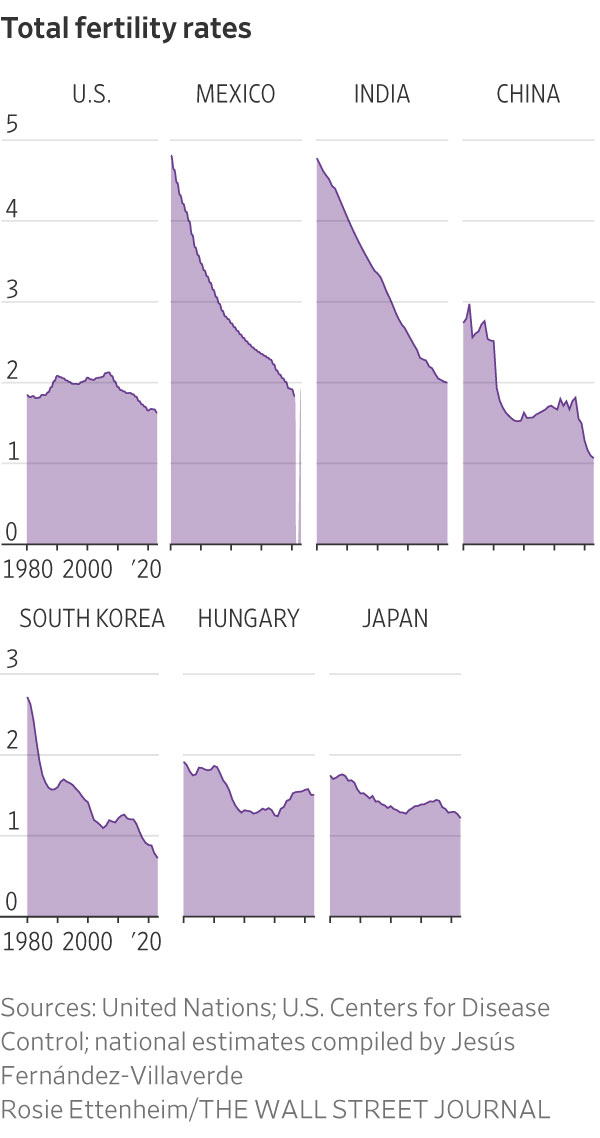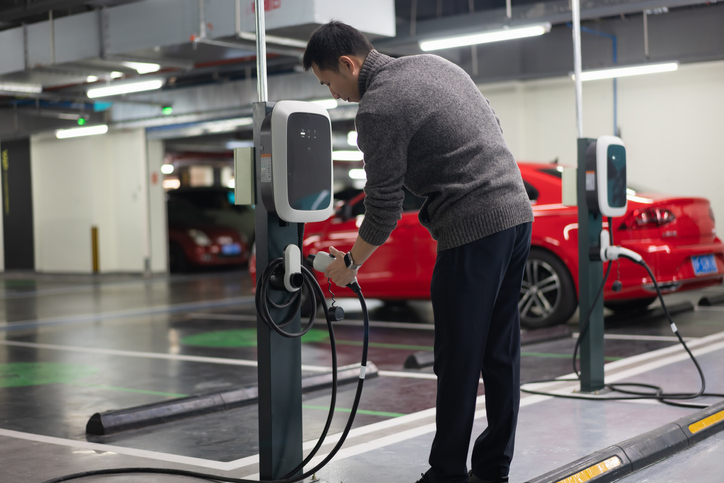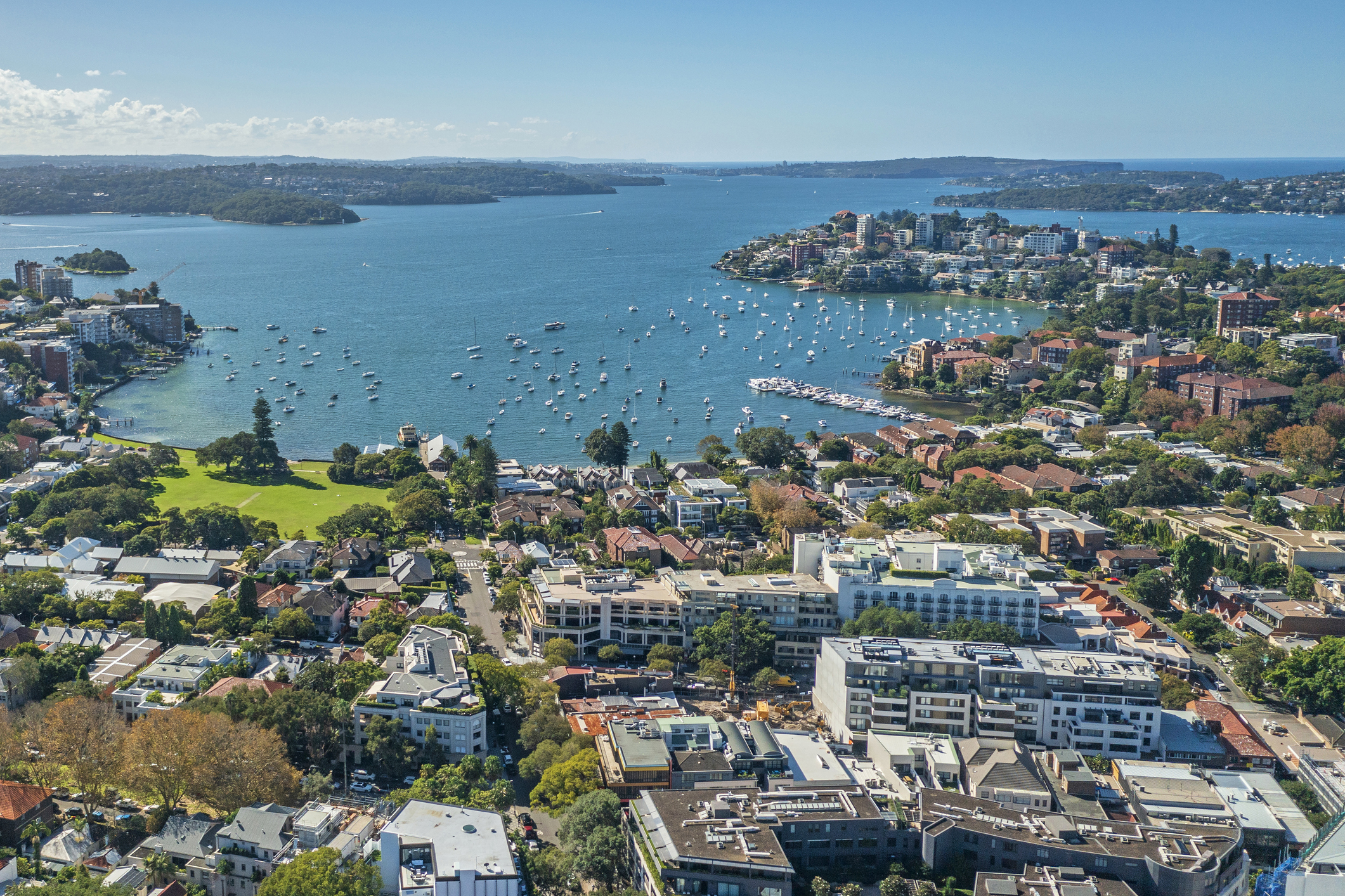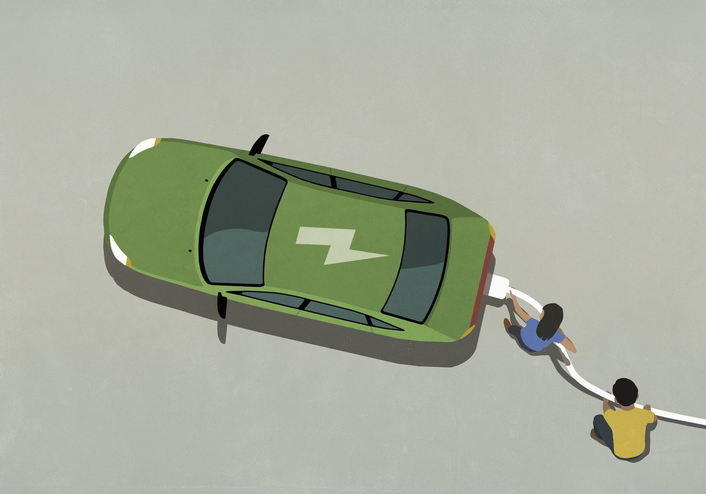The Six Months That Short-Circuited the Electric-Vehicle Revolution
The Michigan plant where the F-150 Lightning electric truck is built used to vibrate with excitement.
President Biden visited in 2021 and test drove the blazing-fast pickup. Before the first ones even started rolling off the assembly line in the spring of 2022, Ford said it would expand the factory to quadruple the number it could build.
That energy is rapidly fading. Ford is cutting the plant’s output by half, and workers are relocating to other facilities, mostly those making gas-powered pickups and SUVs.
The sudden change “was a little bit of a shocker,” said Matthew Schulte, who inspects trucks at the factory in suburban Detroit. “Reality has set in.”
As recently as a year ago, automakers were struggling to meet the hot demand for electric vehicles. In a span of months, though, the dynamic flipped, leaving them hitting the brakes on what for many had been an all-out push toward an electric transformation.
A confluence of factors had led many auto executives to see the potential for a dramatic societal shift to electric cars: government regulations, corporate climate goals, the rise of Chinese EV makers , and Tesla ’s stock valuation , which, at roughly $600 billion, still towers over the legacy car companies.
But the push overlooked an important constituency: the consumer.
Last summer, dealers began warning of unsold electric vehicles clogging their lots. Ford, General Motors , Volkswagen and others shifted from frenetic spending on EVs to delaying or downsizing some projects. Dealers who had been begging automakers to ship more EVs faster are now turning them down .
Even Tesla Chief Executive Elon Musk warned of “notably lower” growth in vehicle deliveries for the company in 2024.
“This has been a seismic change in the last six months of last year that will rapidly sort out winners and losers in our industry,” said Ford Chief Executive Jim Farley on an earnings call in early February.
EV sales continue to grow, and auto executives say they remain committed to the technology. But many are recalibrating their plans.
Ford has pulled back on EV investment and could delay some vehicle launches, while increasing production of hybrids , which run on both gasoline and electricity. It lost a staggering $4.7 billion last year on its battery-powered car business and projects an even bigger loss this year, in the range of $5 billion to $5.5 billion.
Some auto executives acknowledge they got ahead of the market with overzealous demand projections. Pandemic-era supply-chain shocks and a resulting car shortage created long waiting lists and early buzz for EVs, making the industry overly optimistic.
Only later, as a barrage of new EVs hit the market, did executives realise that car buyers were more discerning than they expected. Many were hesitant to pay a premium for a vehicle that came with compromises.
Farley and other industry CEOs are still confident that EVs will eventually take off, albeit at a slower pace than initially envisioned. But for now, the massive miscalculation has left the industry in a bind, facing a potential glut of EVs and half-empty factories while still having to meet stricter environmental regulations globally.
“Ultimately, we will follow the customer,” GM Chief Executive Mary Barra told analysts this month.
In 2020, as the car market unexpectedly heated up during pandemic lockdowns, traditional automakers shifted from dabbling in electric cars to launching an all-out blitz. They outlined plans to build dozens of battery factories, EV assembly plants and vehicle models, pledging more than a half-trillion dollars of investment in the technology through 2026, according to consulting firm AlixPartners.
The rapid rise of Elon Musk’s Tesla added to the urgency. Over just a few years, its market value rocketed past those of legacy car companies. Wall Street cheered strategic moves toward electrics and bid up shares of EV startups.
Tougher auto-emissions restrictions in Europe and China gave car companies little choice but to add more EVs or risk penalties. The Biden administration steered the industry toward more environmentally friendly cars, earmarking hundreds of billions in subsidies for battery production, consumer tax breaks and EV chargers.
At the start of 2023, car executives were expecting to cash in on their EV bets.
GM’s Barra had been among the earliest and most vocal industry advocates of shifting to EVs. The Detroit automaker set a goal of phasing out nearly all gas-engine vehicles by 2035.
“This is a breakout year,” Barra said on GM’s January 2023 earnings call . GM was finally making its own batteries and said it was ready to start cranking out EVs to satisfy pent-up demand for a new electric Cadillac SUV and Hummer pickup truck.
Ford, emboldened by swelling orders for the F-150 Lightning, increased prices for the pickups by as much as $20,000 over the original sticker. Elsewhere, car executives were talking up their plans to accelerate EV factory work.
Trouble ahead
Then warning signs began to appear. In mid-January of last year, Tesla slashed prices on some models by more than 20%, triggering a chain reaction.
Used-car dealers who had Tesla Model 3s and Model Ys in stock saw their values plummet by thousands of dollars. Customers who had bought Teslas at higher prices were furious.
“Why cut EV prices when demand is greater than supply?” Bank of America analyst John Murphy wondered.
Musk insisted that there was no demand problem. The company was trying to broaden appeal by making its cars more affordable, he told analysts.
Inside Ford, staffers analyzed what Tesla’s cuts might mean for its own EV sales. About two weeks later , Ford reduced prices on some versions of its Mustang Mach-E SUVs by nearly 9%.
Speaking to analysts in May, Farley largely shrugged off the pricing pressures, saying they weren’t reflective of broader interest in EVs. He remained upbeat about Ford’s outlook, reiterating plans to expand Lightning output.
Around that time, car dealer Mickey Anderson began noticing that EVs were accumulating on his lots in Kansas, Nebraska and Colorado.
At first, Anderson and other retailers thought the slower sales were a fluke. At meetings with manufacturers in the late spring and summer, the dealers compared notes.
“We were worried,” Anderson recalled. “We went from wait lists to six months of supply, seemingly in a matter of weeks.”
As car companies entered the summer-selling season, there were other worrying signs. U.S. EV sales for the first half of 2023 rose 50% from a year earlier, down from a 71% increase in the first half of 2022.
The wave of early EV adopters willing to splurge had receded, and the next round of potential customers was proving more hesitant. They had more questions about how far a car could go on a single charge , and the life expectancy of batteries. They worried about charging times, repair costs, and not having enough places to plug in, according to dealers and surveys.
Interest rates were rising, pushing up monthly payments on EVs, which already were selling, on average, for about $14,000 more per vehicle than gas-engine models, according to research firm J.D. Power.
Lyndsey Grover, a Dallas-based pediatric anesthesiologist, said her husband was pushing her last year to replace her hybrid Volvo with an all-electric version, for environmental reasons.
She looked at a Rivian SUV, Tesla Model Y and an electric Mercedes, but ended up with another Volvo—a plug-in hybrid that could travel some distance on battery power before switching to traditional hybrid mode.
Her husband already had a Tesla Model S. She said it often requires a full night of charging at home, and even then, its range on a single charge often fell below estimates displayed by the vehicle. She felt the family needed at least one gas-powered vehicle.
GM was having trouble processing battery cells , a bottleneck that was preventing it from getting EVs to showrooms. Manufacturing delays left buyers waiting for delivery of models such as the Cadillac SUV and Hummer pickup truck.
Late last July, GM’s Barra told analysts plenty of consumers still wanted the company’s EVs. “These vehicles are getting to the dealers’ lots, and if they’re not already sold, they’ve got a list of people who are waiting for them,” she said.
Two days later, Ford’s Farley struck a different tone . “The paradigm has shifted,” he told analysts. Although consumers were still buying EVs, Ford’s pricing power was deteriorating compared with gas-engine models, he said, and the market for EVs would remain volatile.
Jefferies analyst Philippe Houchois asked Farley what had changed. “A few weeks ago when we saw you in Detroit…it’s like you had religion” on EVs, he told the CEO.
Farley replied that Ford was responding to market realities.
A Ford spokesman said that producing significant numbers of electric pickups before its rivals enabled the company to become an EV truck leader and to attract customers from other brands. Learning about the habits of EV buyers, he said, would benefit future vehicle development.
Late last summer, Ford dealer Ed Jolliffe saw on his store’s computer system that the factory planned to ship him about a dozen Lightnings. That worried him.
Earlier, his Detroit-area dealership had been receiving one or two Lightnings at a time, and his salespeople had had no trouble finding buyers. More recently, prospective customers seemed more hung up on the monthly payment of nearly $1,000.
Jolliffe had spent a half-million dollars installing EV fast chargers. He was getting ready to rent a billboard along the nearby interstate declaring: “Fastest Chargers Downriver!”
“We were all-in,” he said. So he swallowed hard and agreed to take the trucks.
Changing plans
The unraveling came swiftly. In a single month last fall, the average interest rate on an electric-car purchase jumped from 4.9% to 7%, making monthly payments even less affordable for some shoppers, said Tyson Jominy, vice president of data and analytics for J.D. Power.
Suddenly, once-long waiting lists for EVs shrank and buyers dropped reservations.
Over a 10-day span in October, the tone of automakers in Detroit and beyond turned gloomier. GM said it would delay by one year a $4 billion overhaul of a suburban Detroit factory to build new electric pickup trucks, citing “evolving EV demand.”
The next day, Elon Musk said that not as many people could afford a Tesla given higher interest rates and tougher economic conditions. Affordability was keeping a lid on demand, he said during a call to discuss third-quarter results.
A week later, on GM’s quarterly call , Barra described the transition to EVs as “bumpy,” and said the company wouldn’t meet a self-imposed goal of producing 400,000 EVs over a two-year period through mid-2024.
Two days later, Ford said it would defer $12 billion in electric-vehicle investments and focus on increasing hybrid production, citing the need to better match demand.
By late last year, it was becoming clear that sales of hybrids—once dismissed by some automakers as an unnecessary half-measure—were taking off and would outsell EVs in 2023.
“People are finally seeing reality,” said Toyota Motor Chairman Akio Toyoda . For years, Toyota and other EV-cautious carmakers had been touting hybrids as a consumer-friendly way to reduce carbon emissions.
In November, thousands of U.S. dealers signed a letter urging Biden to ease proposed regulations that would push the industry to sell more battery-powered cars. “Last year, there was a lot of hope and hype about EVs,” the dealers wrote. “But that enthusiasm has stalled.”
Some auto retailers say that they are now selling EVs at a loss to clear unwanted inventory.
Jolliffe, whose car dealership is a 25-minute drive from the Lightning plant, is struggling to understand what happened. On a recent weekday, he peeked out his window at eight Lightnings and four Mach-Es.
“Nobody’s opening the door” to check them out, he said. “There just seems to be this hesitancy that is hitting hard.”
 Copyright 2020, Dow Jones & Company, Inc. All Rights Reserved Worldwide. LEARN MORE
Copyright 2020, Dow Jones & Company, Inc. All Rights Reserved Worldwide. LEARN MORE
This stylish family home combines a classic palette and finishes with a flexible floorplan
Just 55 minutes from Sydney, make this your creative getaway located in the majestic Hawkesbury region.
Birthrates are falling fast across countries, with economic, social and geopolitical consequences
The world is at a startling demographic milestone. Sometime soon, the global fertility rate will drop below the point needed to keep population constant. It may have already happened.
Fertility is falling almost everywhere, for women across all levels of income, education and labor-force participation. The falling birthrates come with huge implications for the way people live, how economies grow and the standings of the world’s superpowers.
In high-income nations, fertility fell below replacement in the 1970s, and took a leg down during the pandemic. It’s dropping in developing countries, too. India surpassed China as the most populous country last year, yet its fertility is now below replacement.
“The demographic winter is coming,” said Jesús Fernández-Villaverde, an economist specialising in demographics at the University of Pennsylvania.
Many government leaders see this as a matter of national urgency. They worry about shrinking workforces , slowing economic growth and underfunded pensions; and the vitality of a society with ever-fewer children. Smaller populations come with diminished global clout, raising questions in the U.S., China and Russia about their long-term standings as superpowers.
Some demographers think the world’s population could start shrinking within four decades—one of the few times it’s happened in history.
Donald Trump , this year’s presumptive Republican presidential nominee, has called collapsing fertility a bigger threat to Western civilization than Russia. A year ago Japanese Prime Minister Fumio Kishida declared that the collapse of the country’s birthrate left it “standing on the verge of whether we can continue to function as a society.” Italian Prime Minister Giorgia Meloni has prioritized raising the country’s “demographic GDP.”
Governments have rolled out programs to stop the decline—but so far they’ve barely made a dent.
Demographic surprise
In 2017, when the global fertility rate—a snapshot of how many babies a woman is expected to have over her lifetime—was 2.5, the United Nations thought it would slip to 2.4 in the late 2020s. Yet by 2021, the U.N. concluded, it was already down to 2.3—close to what demographers consider the global replacement rate of about 2.2. The replacement rate, which keeps population stable over time, is 2.1 in rich countries, and slightly higher in developing countries, where fewer girls than boys are born and more mothers die during their childbearing years.
While the U.N. has yet to publish estimated fertility rates for 2022 and 2023, Fernández-Villaverde has produced his own estimate by supplementing U.N. projections with actual data for those years covering roughly half the world’s population. He has found that national birth registries are typically reporting births 10% to 20% below what the U.N. projected.

China reported 9 million births last year , 16% less than projected in the U.N.’s central scenario. In the U.S., 3.59 million babies were born last year, 4% less than the U.N. projected. In other countries, the undershoot is even larger: Egypt reported 17% fewer births last year. In 2022, Kenya reported 18% fewer.
Fernández-Villaverde estimates global fertility fell to between 2.1 and 2.2 last year, which he said would be below global replacement for the first time in human history. Dean Spears, a population economist at the University of Texas at Austin, said while the data isn’t good enough to know precisely when or if fertility has fallen below replacement, “we have enough evidence to be quite confident about…the crossing point not being far off.”
In 2017 the U.N. projected world population, then 7.6 billion, would keep climbing to 11.2 billion in 2100. By 2022 it had lowered and brought forward the peak to 10.4 billion in the 2080s. That, too, is likely out of date. The Institute for Health Metrics and Evaluation at the University of Washington now thinks it will peak around 9.5 billion in 2061 then start declining.

In the U.S., a short-lived pandemic baby boomlet has reversed. The total fertility rate fell to 1.62 last year, according to provisional government figures, the lowest on record .
Had fertility stayed near 2.1, where it stood in 2007, the U.S. would have welcomed an estimated 10.6 million more babies since, according to Kenneth Johnson, senior demographer at the University of New Hampshire.
In 2017, when the fertility rate was 1.8, the Census Bureau projected it would converge over the long run to 2.0. It has since revised that down to 1.5. “It has snuck up on us,” said Melissa Kearney, an economist at the University of Maryland specialising in demographics.
A second demographic transition?
Historians refer to the decline in fertility that began in the 18th century in industrialising countries as the demographic transition. As lifespans lengthened and more children survived to adulthood, the impetus for bearing more children declined. As women became better educated and joined the workforce, they delayed marriage and childbirth, resulting in fewer children.
Now, said Spears, “the big-picture fact is that birthrates are low or are falling in many diverse societies and economies.”
Some demographers see this as part of a “second demographic transition,” a society-wide reorientation toward individualism that puts less emphasis on marriage and parenthood, and makes fewer or no children more acceptable.

In the U.S., some thought at first that women were simply delaying childbirth because of lingering economic uncertainty from the 2008 financial crisis.
In research published in 2021 , the University of Maryland’s Kearney and two co-authors looked for possible explanations for the continued drop. They found that state-level differences in parental abortion notification laws, unemployment, Medicaid availability, housing costs, contraceptive usage, religiosity, child-care costs and student debt could explain almost none of the decline. “We suspect that this shift reflects broad societal changes that are hard to measure or quantify,” they conclude.
Kearney said while raising children is no more expensive than before, parents’ preferences and perceived constraints have changed: “If people have a preference for spending time building a career, on leisure, relationships outside the home, that’s more likely to come in conflict with childbearing.”
Meanwhile, time-use data show that mothers and fathers, especially those that are highly educated, spend more time with their children than in the past. “The intensity of parenting is a constraint,” Kearney said.
Erica Pittman, a 45-year-old business banker in Raleigh, N.C., said she and her husband opted to have only one child because of demands on their time, including caring for her mother, who died last year after a long battle with multiple sclerosis. Their 8-year-old son is able to participate in theatre workshops, soccer and summer camps because the couple, with a combined income of about $225,000 a year, has more time and money.

“I feel like a better mom,” Pittman said. “I feel like I can go to work—because I have a fairly demanding job—but I can also make time to volunteer at his school, be the chaperone for the field trip and do those kinds of things, because I only have one to coordinate with my schedule.”
Pittman said she only questions their decision when her son says he wishes he had a sibling to play with. In response, she and her husband, a middle-school history teacher, pick vacation destinations with a kids’ club, such as a Disney cruise, so her son can play with others his age.
‘Plugged into the global culture’
Fertility is below replacement in India even though the country is still poor and many women don’t work —factors that usually sustain fertility.
Urbanisation and the internet have given even women in traditional male-dominated villages a glimpse of societies where fewer children and a higher quality of life are the norm. “People are plugged into the global culture,” said Richard Jackson, president of the Global Aging Institute, a nonprofit research and education group.
Mae Mariyam Thomas, 38, who lives in Mumbai and runs an audio production company, said she’s opted against having children because she never felt the tug of motherhood. She sees peers struggling to meet the right person, getting married later and, in some instances, divorcing before they have kids. At least three of her friends have frozen their eggs, she said.
“I think now we live in a really different world, so I think for anyone in the world it’s tough to find a partner,” she said.
Sub-Saharan Africa once appeared resistant to the global slide in fertility, but that too is changing. The share of all women of reproductive age using modern contraception grew from 17% in 2012 to 23% in 2022, according to Family Planning 2030, an international organisation.

Jose Rimon, a professor of public health at Johns Hopkins University, credits that to a push by national leaders in Africa which, he predicted, would drive fertility down faster than the U.N. projects.
Once a low fertility cycle kicks in, it effectively resets a society’s norms and is thus hard to break, said Jackson. “The fewer children you see your colleagues and peers and neighbours having, it changes the whole social climate,” he said.
Danielle Vermeer grew up third in a family of four children on Chicago’s North Side, where her neighbourhood was filled with Catholics of Italian, Irish and Polish descent and half her close friends had as many siblings as her or more. Her Italian-American father was one of four children who produced 14 grandchildren. Now her parents have five grandchildren, including Vermeer’s two children, ages 4 and 7.
The 35-year-old, who is the co-founder of a fashion thrifting app, said that before setting out to have children, she consulted dozens of other couples and her Catholic church and read at least eight books on the subject, including one by Pope Paul VI. She and her husband settled on two as the right number.
“The act of bringing a child into this world is an incredible responsibility,” she said.
New policies
Governments have tried to reverse the fall in fertility with pro natalist policies.
Perhaps no country has been trying longer than Japan. After fertility fell to 1.5 in the early 1990s, the government rolled out a succession of plans that included parental leave and subsidised child care. Fertility kept falling.
In 2005, Kuniko Inoguchi was appointed the country’s first minister responsible for gender equality and birthrate. The main obstacle, she declared, was money: People couldn’t afford to get married or have children. Japan made hospital maternity care free and introduced a stipend paid upon birth of the child.
Japan’s fertility rate climbed from 1.26 in 2005 to 1.45 in 2015. But then it started declining again, and in 2022 was back to 1.26.
This year, Prime Minister Fumio Kishida rolled out yet another program to increase births that extends monthly allowances to all children under 18 regardless of income, free college for families with three children, and fully paid parental leave.
Inoguchi, now a member of parliament’s upper house, said the constraint on would-be parents is no longer money, but time. She has pressed the government and businesses to adopt a four-day workweek. She said, “If you’re a government official or manager of a big corporation, you should not worry over questions of salary now, but that in 20 years time you will have no customers, no clients, no applicants to the Self-Defense Forces.”
Hungarian Prime Minister Viktor Orban has pushed one of Europe’s most ambitious natality agendas. Last year he expanded tax benefits for mothers so that women under the age of 30 who have a child are exempt from paying personal income tax for life. That’s on top of housing and child-care subsidies as well as generous maternity leaves.
Hungary’s fertility rate, though still well below replacement, has risen since 2010. But the Vienna Institute of Demography attributed this primarily to women delaying childbirth because of a debt crisis that hit around 2010. Adjusted for that, fertility has risen only slightly, it concluded.
In the U.S., while state and federal legislators have pushed to expand child-care subsidies and parental leave, they have generally not set a higher birthrate as an explicit goal. Some Republicans, though, are leaning in that direction. Last year, Trump said he backed paying out “baby bonuses” to prop up U.S. births, and GOP Arizona Senate candidate Kari Lake recently endorsed the idea.
Republican Sen. J.D. Vance of Ohio said falling fertility matters beyond the economic pressures of a smaller labor force and unfunded Social Security. “Do you live in communities where there are smiling happy children, or where people are just ageing?” he said in an interview. Lack of siblings and cousins, he said, contributes to children’s social isolation.
He’s studied potential solutions, in particular Hungary’s approach, but hasn’t seen proof of anything that works over the long term.
The Institute for Health Metrics and Evaluation found little evidence that pronatalist policies lead to sustained rebounds in fertility. A woman may get pregnant sooner to capture a baby bonus, researchers say, but likely won’t have more kids over the course of her lifetime.
Economic pressure
With no reversal in birthrates in sight, the attendant economic pressures are intensifying. Since the pandemic, labor shortages have become endemic throughout developed countries. That will only worsen in coming years as the postcrisis fall in birthrates yields an ever-shrinking inflow of young workers, placing more strain on healthcare and retirement systems.
Neil Howe , a demographer at Hedgeye Risk Management, has pointed to a recent World Bank report suggesting that worsening demographics could make this a second consecutive “lost decade” for global economic growth.
The usual prescription in advanced countries is more immigration, but that has two problems. As more countries confront stagnant population, immigration between them is a zero-sum game. Historically, host countries have sought skilled migrants who enter through formal, legal channels, but recent inflows have been predominantly unskilled migrants often entering illegally and claiming asylum.
High levels of immigration have also historically aroused political resistance, often over concerns about cultural and demographic change. A shrinking native-born population is likely to intensify such concerns. Many of the leaders keenest to raise birthrates are most resistant to immigration.
As birthrates fall, more regions and communities experience depopulation, with consequences ranging from closed schools to stagnant property values. Less selective colleges will soon struggle to fill classrooms because of the plunge in birthrates that began in 2007, said Fernández-Villaverde. Vance said rural hospitals can’t stay open because of the falling local population.
An economy with fewer children will struggle to finance pensions and healthcare for growing ranks of elderly. South Korea’s national pension fund, one of the world’s largest, is on track to be depleted by 2055. A special legislative committee recently presented several possible pension reforms, but there’s only a short window to act before the next presidential election campaign heats up.
There’s been little public pressure to act, said Sok Chul Hong, an economist at Seoul National University. “The elderly are not very interested in pension reform, and the youth are apathetic towards politics,” he said. “It is truly an ironic situation.”
Consumers are going to gravitate toward applications powered by the buzzy new technology, analyst Michael Wolf predicts
This stylish family home combines a classic palette and finishes with a flexible floorplan























